Why Were There So Many Awards?
4/16/20248 min read
The numerous awards were a direct result of the innovative approach adopted, rooted in Electronics and Instrumentation. This approach utilized the scope of this field for analyzing numerous complex issues in nature at a time when there was no professional knowledge or experience in it (as started in point 4-A above). It remains a mystery why others, even those with professional knowledge, do not adopt this method to analyze natural processes.
The design and implementation of five postgraduate (PG) level subjects in five different university departments, covering five distinct subjects, involved a novel process that included more than 400 illustrated descriptions of complex multidisciplinary and interdisciplinary processes in nature.
A1. All five subjects in the educational systems were equipped with five different multi-channel data acquisition systems. These systems, complete with various sensors, were designed to acquire related field data from the complex open environments specific to each subject. Each of the five classes at different universities received multi-channel data acquisition systems in designs tailored to match their subjects, as shown in Figures 1 to 6. This approach enabled effective practical work in open fields alongside theoretical classes, a practice not conventionally followed until now.
A2. Class notes covering the specialties of the five PG level educational subjects were designed and handled with a focus on:
- Theoretical Aspects Connected with Nature: The theoretical aspects of the different subjects are linked with practical issues in nature and the topics covered. Each topic includes essential aspects such as:
- Printed class notes with illustrated descriptions to facilitate a better analysis of the details.
- Practical exercises aligned with those subjects.
- Various assignment topics prepared by the students, record writing based on data acquired from different operational fields using the specific instruments developed for this purpose.
- Field data collection mostly relies on portable field-operated instruments, which were exclusively developed to match each of the subjects. These were made available to the students along with the multi-channel data acquisition facility in single composite portable meters. This setup enables students to carry them to remote locations, separately for each topic, with the objective of acquainting the students with mother nature. It also aims to make them aware of the problems and feasible solutions in the management of natural processes.
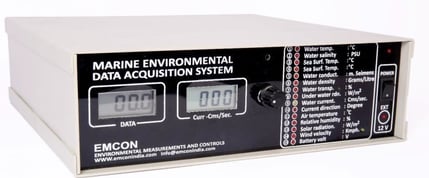

Figure 4: MEDAS (Marine Environmental Data Acquisition System), which provides data across fifteen channels, is a portable, self-contained piece of equipment developed for M.Tech. classes on Coastal and Harbor Engineering at Kerala University of Fisheries and Ocean Studies (KUFOS). This system enables students to acquire a wide range of related data from the marine environment for practical learning purposes
To make the method realistic and practical, efforts were focused on developing numerous sensors (over 150) and electronic observational systems for studying open nature through a systematic process. This process involved the acquisition of operational data in areas such as Agricultural Sciences, Ocean Technology, Fishing Technology, Post-Harvest Technology, Behavior Studies of Marine Animals, Fisheries Hydrography, Greenhouses, Coastal & Harbor Engineering, Dam Safety & Hydrometeorology, Earth Science Studies, Architectural & Structural Engineering, Hydrodynamic Model Studies of Coastal Engineering Processes, Soil & Water Conservation Engineering, Energy & Environment, Meteorology (including Agri-meteorology, Micrometeorology, and Hydrometeorology), and Water Technology & Management. These topics were elucidated with over 500 illustrated figures and more than a dozen PowerPoint presentations to explain the academic and operational details.
Multi-channel Data Acquisition Systems, complete with respective sensors, were developed and provided to all five university classes where postgraduate level classes were conducted. This approach aimed to familiarize students more realistically with the subjects by understanding the intricate nature associated with them. Additionally, over 500 illustrative figures and numerous PowerPoint presentations were prepared to educate postgraduate students and scientists engaged in related R&D activities, as detailed in ANNEX-A.
All these efforts were based on indigenous technology, aiming to conduct systematic monitoring and analysis of natural processes through several interdisciplinary investigations and experiments in remote and open nature. Many complex processes in open nature can be precisely analyzed based on the acquisition of respective operational parameters, rather than relying solely on statistical analysis. While statistical evaluations can be conveniently followed as the final test, without systematic analysis, they do not contribute to systematic progress in the related science and technology fields.
The success of these initiatives depends on the precision and perfection of the sensors and instrument systems used, as well as the adequacy of their installation and operation for acquiring information from remote sites.
The new concept and possibilities, demonstrated through significant contributions to analyzing complex natural processes in open nature, garnered support from:
- The Department of Electronics, Government of India, and
- The Agricultural Engineering Division of ICAR, Delhi, both of which offered ad-hoc projects for the development of more sensors and electronic observation systems. They also facilitated the supply of results to different institutions and demonstrated these across the country.
Figure 5: Agri-Meteorological Data Logger developed for M.Sc. classes at Kerala Agricultural University's Academy of Climate Change Education and Research (KAU-ACCER), Thrissur. This device is used for conducting practical classes on various parameters of agricultural sciences, facilitated by the author.
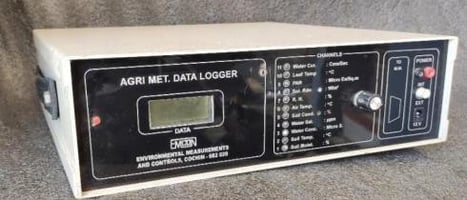


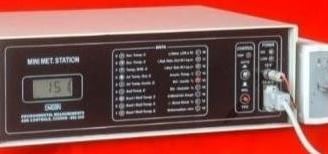
Figure 6: MiniMet Station developed for Tamil Nadu Agricultural University (TNAU), Coimbatore, to acquire and record a wide range of data easily from remote locations related to weather, soil, plant, water, and energy parameters such as solar radiation, wind velocity, and wind gusts. This system facilitates the automatic accumulation of energy parameter values in quantitative terms over long durations, up to several years.
Figure 7: Ship-borne Data Logger developed as part of the M.Phil. course at the School of Naval Oceanography and Meteorology (SNOM)—Indian Navy. The data acquired include water current, current direction, water salinity, water temperature, solar radiation, relative humidity (RH), wind, direction with respect to the ship, and the rolling of the ship.
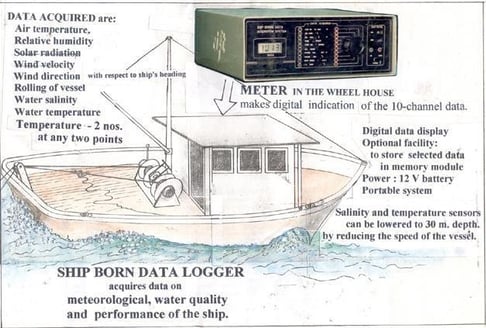

Figure 8. UMT (Universal Marine Telemeter) Developed at CIFT in 1985
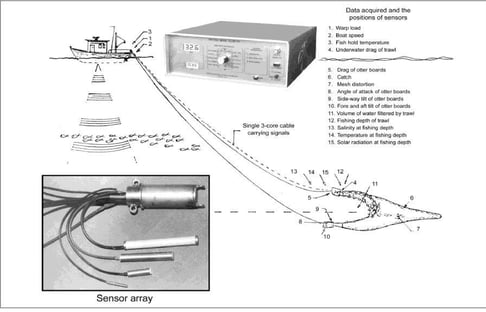

The UMT was designed for systematic analysis of the hydrodynamic performance of the otter trawl system, featuring 15 operational parameters without requiring a battery power supply on the net. Data acquisition and transmission from the underwater trawl system to the onboard meter were achieved through a single 3-core cable. This innovation received international acclaim from the United Nations in 1988 for its unique operational features, including:
1. No other country has reported developing an equivalent or superior system.
2. The system can acquire numerous operational parameters and their magnitudes simultaneously.
3. Avoiding the use of battery power on the underwater net prevents its weight from affecting normal underwater behavior.
4. In 1985, CIFT organized a national training course exclusively focused on this system, where it was operated multiple times to gather and publish unique data in the proceedings of the National Training Course.
5. Data from the underwater net is transmitted to the meter through a single 3-core cable.
6. A single UMT meter displays the total data sequentially.
7. The development was presented as a scientific paper at the "Fishing Gear and Fishing Vessel Design" seminar organized by the FAO of the United Nations in Canada, 1988.
8. The FAO offered to cover all presentation expenses.
9. Despite the lack of response from ICAR-Delhi regarding attendance, and subsequent lack of permission despite no incurred expenses, the presentation was carried out by another individual arranged by the organizers.
10. The organizers sent the presentation materials and a monetary honorarium, which was donated to the "Prime Minister's Relief Fund."
11. An FAO officer's visit to inspect the UMT went unmet due to lack of information about his visit.
12. The equipment remains in operational condition to this day.
Further Insights and Related Developments:
- R&D activities in countries like Canada, Japan, the UK, and the Soviet Union, as documented in the FAO publication "Modern Fishing Gear of the World Vol. 1 and 2," typically reported developments in fishing gear performance of up to four parameters.
- The developments made in fishing technology, post-harvest technology (PHT), fisheries hydrography, and behavior studies of marine animals are detailed in a CIFT publication from 2007, highlighting pages 40 and 68.
- The unique development of the UMT and the lack of comparable technology in more advanced countries pose significant questions for the field, underscoring the innovative capabilities at CIFT.
National Awards and Recognition:
- The Development of the Trawl-Depth Meter, enabling aimed trawling by controlling the operational depth of the trawl net, received the National Invention Award on Republic Day, 1971, showcasing its importance in advancing fishing operations.
The Disbanding of Electronics and Instrumentation at ICAR:
- The decision by ICAR to disband the "Electronics and Instrumentation" discipline, despite its contributions across 15 prime areas, represents a significant loss to CIFT, ICAR, and the broader scientific community. This action raises questions about the strategic direction and recognition of technological advancements within ICAR.
Additional Notes:
Scientific analysis of dynamic systems like the otter trawl system requires detailed measurements of each component to obtain unbiased information on operational parameters. This effort aligns with the information presented in "Modern Fishing Gear of the World Vol. 1 & 2" by the FAO of the United Nations, emphasizing the need for detailed, hands-on research in environmental, marine, fisheries, and agricultural applications.
For more detailed information, refer to ANNEX-B, ANNEX-C, ANNEX-D, and ANNEX-E.
Figure 9: Portable Type Warp Load Meter for smaller type fishing trawlers. This design is much easier to fabricate for the underwater sensor. It enables stabilization in water and provides a facility free from Cosine Angle Error. It offers information on the scope ratio and ensures the safety of the underwater unit of the net and its accessories, including otter boards.
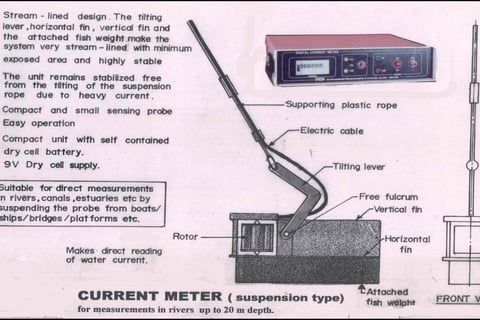

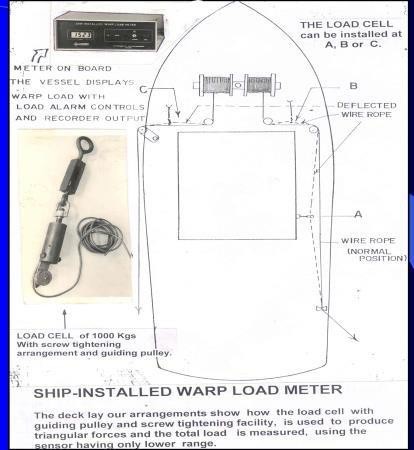

Figure 10: Ship-Installed Warp Load Meter was developed for load measurements in larger trawlers. The measurements, conducted during trawling without disturbing the fishing operation, help detect possible malfunctions and save the net.
This item in Fig. 9 + Other in Fig. 10 together received: NATIONAL INVENTION AWARD OF GOVT. OF INDIA IN 1976.
The significance of the Universal Marine Telemeter (UMT), which garnered high praise from the United Nations during the presentation of a related scientific paper at the seminar organized by the FAO of the UN in Canada in 1988, can be attributed to several factors:
1. The analysis of the otter trawl system presented a significant challenge in Fishing Technology, as documented across various chapters of "Modern Fishing Gear of the World, Vol. 1 and 2." While many countries have attempted to analyze the otter trawl system using similar methods, they were only able to record four or five parameters of the system.
2. Unlike these previous efforts, the UMT enabled the acquisition of complete 15-channel data instantaneously during trawling operations, rather than analyzing recorded data post-operation. This capability provides a more comprehensive and immediate analysis of the otter trawl system, offering valuable insights that can be directly applied to improve fishing industry practices.
3. The availability of underwater data in real-time allows the ship's skipper and crew to take immediate corrective actions if malfunctions are detected, especially concerning the underwater net and its accessories.
4. Probable malfunctions of the underwater trawl system identified through UMT data include:
- Otter boards not performing as expected, affecting the horizontal opening of the net.
- Otter boards plowing into the bottom mud during bottom trawling, resulting in excess load indicated on the meter.
- Distortion of mesh shapes at different parts due to incorrect rigging, causing extra strain on the meshes.
- The cod-end tearing and fish escaping from the net.
- Unequal tension on both sides due to improper lengths of ropes paid out, which is indicated by the loads on the meter.
5. The UMT, with its sensors and measurement techniques, enables the measurement of these and other operational parameters, allowing for timely corrections if necessary. This level of operational insight and the ability to address issues in real-time distinguish the UMT from any other equipment developed in more advanced countries, emphasizing its unique contribution to the analysis of the otter trawl system with 15 operational parameters.